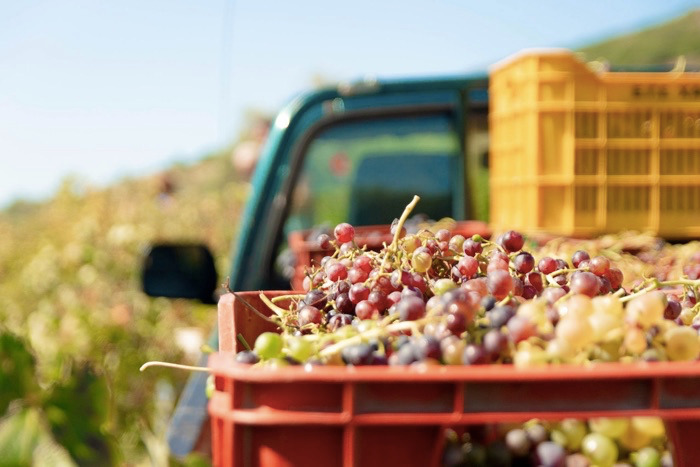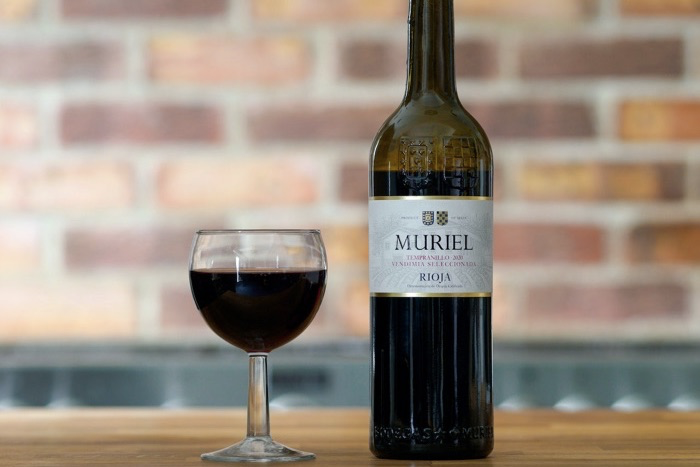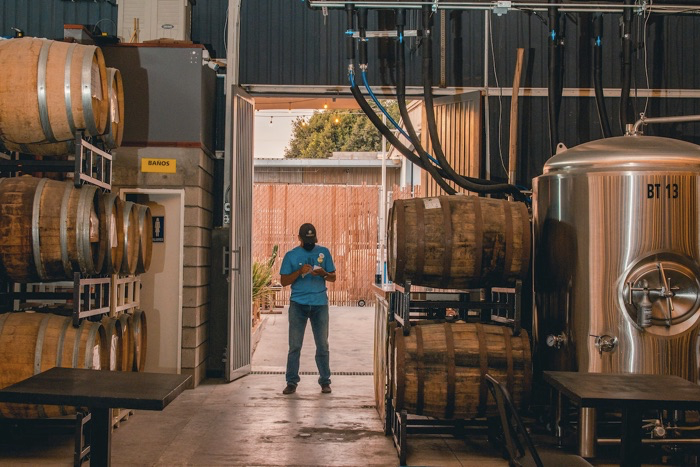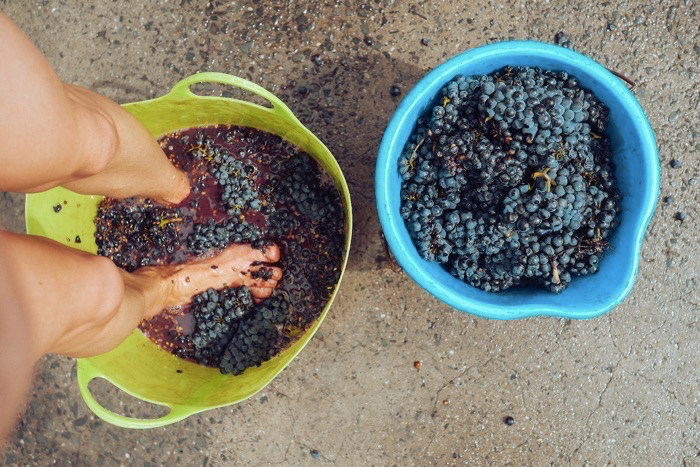Winemaking Process in Spain
Dive into the rich history, traditional methods, and modern innovations that define Spain's renowned wine industry.

The art of winemaking is deeply rooted in Spanish culture, intertwined with centuries-old traditions and a deep appreciation for craftsmanship. In this article, we take you on an immersive journey through the captivating winemaking process in Spain.
We reveal layers of history to unearth ancient practices still in use today while unravelling the innovative techniques employed by today's winemakers, pushing boundaries and reinventing Spanish wines for a new era. Buckle up as we uncork a bottle full of knowledge about one of the best wine destinations in Europe: Spain!
A brief overview of Spain's rich wine history
Since ancient times, Spain has been a land of vineyards. The Phoenicians, the Romans and the Moors all contributed to the viticultural practices that laid the foundations for what is now one of the most respected wine industries in the world.
Spain's importance in the global wine industry
Spain stands out as an influential leader in the world of wine, with the largest area of vineyards in the world and climatic diversity that favours a wide variety of grapes, resulting in an extensive and distinctive range of wines.
Its winemaking tradition, which fuses ancient and modern techniques, is reflected in the winemakers' ability to balance tradition with innovation, creating exceptional wines and adopting organic and sustainable practices.
Spanish wine regions, such as Rioja, Priorat and Ribera del Duero, are internationally renowned, establishing Spain not only as a producer of prestigious red wines but also versatile white wines.
Traditional Winemaking Methods
Traditional winemaking methods in Spain have a rich and diverse history that reflects the country's centuries-old wine culture. These ancient techniques are still practised today by expert winemakers who value tradition and craftsmanship.
Overview of Ancestral Techniques
One such method is the use of clay amphorae, which dates back to ancient times. This traditional approach involves fermenting and ageing wine in clay pots that allow for gentle oxygen exchange, resulting in wines with pronounced complexity and character.
Another notable technique is the use of hand treading to extract juice from grapes. While modern mechanical methods have largely replaced this labour-intensive process, some small-scale producers continue to take this hands-on approach.
Trampling not only facilitates the gentle extraction of flavours and tannins but also imparts a unique style to wines, showcasing the intimate connection between the human touch and nature's bounty.
A detailed look at carbonic maceration, especially in the Rioja region
Carbonic maceration is a traditional winemaking method that has its roots in the Rioja region of Spain. This technique, also known as whole-berry fermentation, involves fermenting entire bunches of grapes in a carbon dioxide-rich environment before crushing them. The process begins by placing the grape bunches in large vats and sealing them to create an anaerobic environment.

During this phase, the grapes undergo intracellular fermentation, meaning that fermentation occurs within each berry without the presence of oxygen. This unique method allows for the production of wines with bright red fruit flavours, low tannins, and vibrant acidity.
Traditional Rioja wines made using carbonic maceration present lively aromas of cherries and raspberries, added to a soft and juicy palate.
While carbonic maceration is commonly associated with young, fruity red wines like Beaujolais Nouveau, it also plays an important role in many Rioja reds. A good example is the famous style of wine known as Joven: young wines that come to the market after only several months or minimal ageing in barrels.
These fresh and vibrant wines owe their character to the carbonic maceration techniques used during winemaking.
However, it is important to note that not all Rioja reds use carbonic maceration. In fact, in many vintage bottlings of Rioja Crianza or Gran Reserva, traditional methods prevail, such as destemming and pressing the grapes before alcoholic fermentation.
Influence of traditional oak barrels and ageing processes
One of the key elements that contribute to the unique character of Spanish wines is the use of traditional oak barrels and ageing processes. These methods have been passed down from generation to generation and play a crucial role in shaping the flavour profile and complexity of Spanish wines.
Oak barrels are widely used in Spain to age red and white wines. The type of oak used, typically American or French, greatly influences the final product. American oak imparts bold flavours of vanilla, coconut and spice, while French oak brings more subtle notes of toast, smoke and cedar.

These distinctive characteristics add layers of complexity to the wine as it matures over time.
Ageing is another critical aspect of traditional winemaking practices in Spain. While many modern wineries use stainless steel tanks or concrete vats for fermentation and storage, traditional winemakers understand that ageing in oak barrels highlights certain qualities that cannot be replicated with any other method.
The porous nature of the wood allows for slow oxidation and microoxygenation during ageing, which softens the tannins and enhances the aromatic compounds present in the wine. This prolonged period of maturation gives Spanish wines their distinctive softness and elegance.
Modern Innovations in Spanish Winemaking
In recent years the industry has seen a wave of modern innovations that have transformed the way wine is produced.
The role of technology and research in the evolution of the winemaking process
Technology and research have played a crucial role in this evolution, allowing winemakers to achieve greater precision and quality in their wines.
A key innovation is the use of advanced viticultural techniques. Through satellite mapping and data analysis, winemakers can now identify microclimates within vineyards, allowing for more targeted irrigation and canopy management.
This not only optimizes grape development but also minimizes water consumption, making Spanish viticulture more sustainable.
Additionally, technology has revolutionized the fermentation process. Temperature control systems allow wineries to closely monitor and adjust conditions during fermentation, resulting in more consistent flavours and aromas.
In addition, innovative yeast strains are being developed through research to improve the specific characteristics of different grape varieties. These advances have expanded the possibilities for winemakers to create unique expressions of Spanish wines.
Trends in sustainable and organic viticulture
With increased awareness of environmental sustainability, many wineries are adopting organic or biodynamic farming methods, minimizing the use of chemicals, embracing biodiversity, and implementing water management techniques.
These approaches not only help protect the environment but also contribute to producing healthier grapes with more pronounced varietal characteristics.
£10
Special offer available for a minimum purchase of £99. Discount voucher valid for four weeks from issue date. Cannot be used in conjunction with other promotions except for the free delivery special offer.

Unique Winemaking Processes in Each Region
Each region of the country has its own unique approach to winemaking, resulting in an interesting variety of flavours and styles. Take, for example, the Rioja region. We already explained its uniqueness by using a traditional method called carbonic maceration.
Moving on to Catalonia, we find another intriguing winemaking process called the Traditional Method. This method, primarily used in the production of Cava sparkling wine, involves secondary fermentation within each individual bottle.
Rotating them gradually during ageing helps create those fine bubbles we associate with quality sparkling wines. The result is vibrant and refreshing cavas, full of spicy flavours and elegant aromas.
Let's now head south, to Andalusia, where sherry production takes centre stage. One of the most unique aspects of sherry production is the use of a complex system called solera. In this process, the barrels containing older Sherry are grouped together with the younger ones stacked on top. Over time, small amounts of each barrel are blended so that the new wines take on some characteristics of older vintages while adding their own distinctive qualities.
Challenges and Future Perspectives
while the industry thrives on its rich history, it also faces numerous challenges that demand innovative solutions for a prosperous future. From market globalization to vine diseases, producers face a series of challenges in the current landscape.
How climate change could affect the industry
An important challenge facing winemakers in Spain is climate change. Rising temperatures and unpredictable weather patterns have a direct impact on vineyard performance and grape quality.
As a result, winemakers must employ new strategies, such as moving to colder regions or higher altitudes to maintain optimal conditions for grape ripening. Additionally, there is a growing need for sustainable agricultural practices to minimize environmental impact and preserve the unique terroir of Spanish wines.
Future of winemaking in Spain with an emphasis on innovation and sustainability
Spain, with its combination of tradition and modernity, is well-positioned to face future challenges and remain a leader in the global wine industry.
Conclusion
Reflecting on the importance of balancing tradition and innovation, it is evident that Spain continues to reinvent itself while maintaining its rich wine heritage. We invite readers to explore and appreciate the depth and diversity of Spanish wines.
FAQs
What grape varieties are used to make wine in Spain?
In Spain, a wide variety of grapes are used, such as Tempranillo, Garnacha, Monastrell and Albariño, among others.
How long does the wine fermentation process take?
Wine fermentation time can vary depending on the type of wine, but generally lasts between 7 and 14 days.
What is wine ageing and how long does it last?
Wine ageing is the period during which wine is aged in oak barrels. It can last from a few months to several years, depending on the type of wine.
How is the quality of Spanish wine determined?
The quality of Spanish wine is determined by factors such as the grape variety used, climatic conditions, winemaking method and ageing techniques.
What is the difference between a young wine and a mature wine?
The difference lies in the ageing time. A young wine does not go through a prolonged ageing period, while a vintage wine undergoes an ageing process in barrels before being bottled.
You May Be Also Interested in
- Spanish Food and Wine Pairings
- Spanish Rosé Wine Guide
- 5 Spanish Wines to Serve with Vegetable Dishes
- Denominaciones de Origen (designations of origin) of Spanish wines
- An introductory guide to Spanish wine
- Spain’s 10 most expensive red wines
- Types of Spanish Wines
- Viticulture in Spain